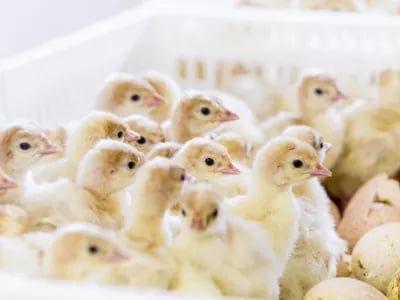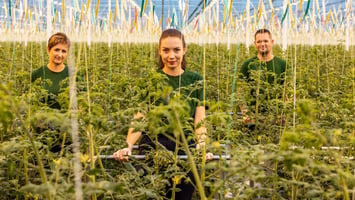Can consumers trust that the chocolate bars sold in supermarkets are genuinely fair trade? Have the free-range chickens found on grocery-store shelves really lived a ‘better life’ as claimed on the packaging, and how environmentally friendly is sustainably farmed salmon really? Blockchain technology provides both consumers and all links in the supply chain with the certainty that the claims printed on product packaging are accurate. Hendrix Genetics, market leader in animal genetics, carried out its own blockchain experiment and sees great value and potential in the technology, says Chief Innovation & Technology Officer Johan van Arendonk.
What was the impetus behind setting up a pilot project based on blockchain technology?
“The technology caught our interest, and while you can choose to read everything you can about the subject, you can also simply start using the technology. We believe blockchain offers two opportunities to address two problems in the supply chain. The first problem is that Hendrix Genetics invests in innovative technologies that, for example, improve the quality of meat at the bottom of the supply chain. The only thing is, we don’t reap any financial benefits from that investment. There is an added value – better or tastier meat – for which consumers are willing to pay, but it only has effect way down the supply chain.”
“The result is that we focus mainly on innovations of value to the link right after us: pig farmers, turkey breeders, and so on. We maintain direct relationships with them and sell them animals, and they are willing to pay for superior ones. The current situation, then, thwarts innovations that pay off further down the supply chain. The second problem is that the supply chain’s current structure prevents us from improving overall supply chain performance. That can only be achieved by having all the links in the supply chain work closely together, with each link having access to the data for all links in the chain. Blockchain enables you to make all that information available in a transparent way.”
Could you explain, in layman’s terms, what a blockchain is exactly?
“In our case, it’s a separate IT platform to which you link all the players in the supply chain. The platform contains an electronic version of a traditional paper general ledger. All stakeholders have access to this public electronic ledger, and your entries can no longer be changed once they have been verified by a type of online notary. Each entry – that is, segment of data – is converted into a ‘block’. A transaction such as ‘delivered 10,000 eggs to party A’ represents a digital record in the electronic ledger, also known as a ‘block.’ Chickens kept by party A hatch these eggs; the hatch rate is 90%, which results in 9,000 chicks, which are supplied to party B: a new block. Party B feeds and tends to the animals, records in the system that 200 animals have died, and supplies 8,800 animals to party C: this is another block. This creates a ‘chain’ of blocks which record exactly who performs what transactions where. The blockchain can be tracked by all users of the chain, without there being any doubt as to its accuracy.”
So how does this resolve the problems you outlined?
“Since information remains linked to a specific group of animals throughout the entire chain, consumers buying chicken in supermarkets can see the name of the slaughter facility on the packaging, as well as information on the poultry farmer who raised the chicken, including rearing conditions. They can see that Hendrix Genetics supplied the chicken. This is all completely transparent, and all the links in the chain are encouraged to attain the highest performance levels and be innovative.
Some livestock farmers may rear the animals using superior, healthier and more efficient methods than others. This exchange of information promotes improvement, and the added value in the form of higher consumer prices affects all players in the supply chain, since all users have contributed something of their own. So this technology brings improvement for all parties involved, while also creating a platform to facilitate radical improvement across the supply chain.
The chain is currently supply-driven, which is to say that livestock farmers decide when they have their animals culled, while slaughter facilities need to check availability before they can decide where to sell their meat. Blockchain creates the option of an actual supply chain director: someone who knows how much meat will be needed next week, and which livestock farmers have a sufficient number of animals of the age and quality required to meet this demand. It actually gives you access to a demand-driven supply chain in which supply and demand are in equilibrium, which is not currently the case, but which would make the supply chain more sustainable. All in all, the use of blockchain creates immense opportunities.”













